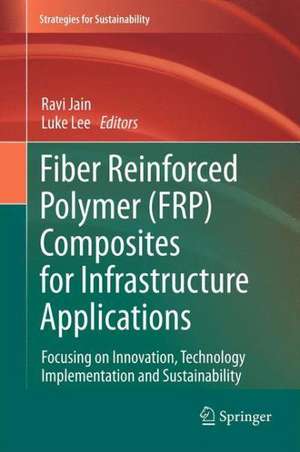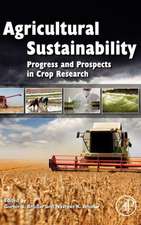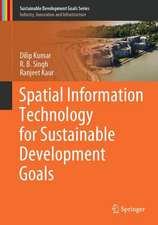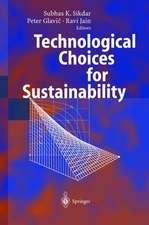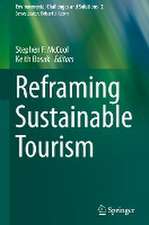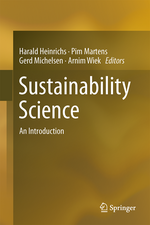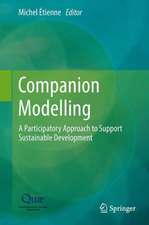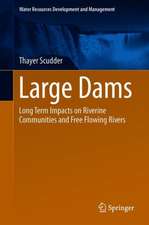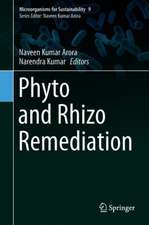Fiber Reinforced Polymer (FRP) Composites for Infrastructure Applications: Focusing on Innovation, Technology Implementation and Sustainability: Strategies for Sustainability
Editat de Ravi Jain, Luke Leeen Limba Engleză Hardback – 3 ian 2012
| Toate formatele și edițiile | Preț | Express |
|---|---|---|
| Paperback (1) | 559.56 lei 38-44 zile | |
| SPRINGER NETHERLANDS – 23 aug 2016 | 559.56 lei 38-44 zile | |
| Hardback (1) | 642.51 lei 6-8 săpt. | |
| SPRINGER NETHERLANDS – 3 ian 2012 | 642.51 lei 6-8 săpt. |
Din seria Strategies for Sustainability
- 18%
 Preț: 784.48 lei
Preț: 784.48 lei - 18%
 Preț: 1118.30 lei
Preț: 1118.30 lei - 20%
 Preț: 481.04 lei
Preț: 481.04 lei - 18%
 Preț: 719.76 lei
Preț: 719.76 lei - 18%
 Preț: 774.83 lei
Preț: 774.83 lei - 18%
 Preț: 958.38 lei
Preț: 958.38 lei - 20%
 Preț: 752.68 lei
Preț: 752.68 lei - 18%
 Preț: 889.29 lei
Preț: 889.29 lei - 18%
 Preț: 1232.09 lei
Preț: 1232.09 lei - 18%
 Preț: 953.35 lei
Preț: 953.35 lei - 15%
 Preț: 643.48 lei
Preț: 643.48 lei - 18%
 Preț: 1114.65 lei
Preț: 1114.65 lei - 19%
 Preț: 479.83 lei
Preț: 479.83 lei - 23%
 Preț: 605.17 lei
Preț: 605.17 lei - 20%
 Preț: 929.06 lei
Preț: 929.06 lei - 24%
 Preț: 632.63 lei
Preț: 632.63 lei - 15%
 Preț: 642.83 lei
Preț: 642.83 lei -
 Preț: 395.33 lei
Preț: 395.33 lei - 18%
 Preț: 901.74 lei
Preț: 901.74 lei - 18%
 Preț: 1389.15 lei
Preț: 1389.15 lei - 15%
 Preț: 641.71 lei
Preț: 641.71 lei - 18%
 Preț: 779.26 lei
Preț: 779.26 lei - 24%
 Preț: 793.36 lei
Preț: 793.36 lei - 15%
 Preț: 635.15 lei
Preț: 635.15 lei
Preț: 642.51 lei
Preț vechi: 755.88 lei
-15% Nou
Puncte Express: 964
Preț estimativ în valută:
122.95€ • 128.63$ • 102.13£
122.95€ • 128.63$ • 102.13£
Carte tipărită la comandă
Livrare economică 02-16 aprilie
Preluare comenzi: 021 569.72.76
Specificații
ISBN-13: 9789400723566
ISBN-10: 9400723563
Pagini: 346
Ilustrații: XIII, 280 p.
Dimensiuni: 155 x 235 x 23 mm
Greutate: 0.48 kg
Ediția:2012
Editura: SPRINGER NETHERLANDS
Colecția Springer
Seria Strategies for Sustainability
Locul publicării:Dordrecht, Netherlands
ISBN-10: 9400723563
Pagini: 346
Ilustrații: XIII, 280 p.
Dimensiuni: 155 x 235 x 23 mm
Greutate: 0.48 kg
Ediția:2012
Editura: SPRINGER NETHERLANDS
Colecția Springer
Seria Strategies for Sustainability
Locul publicării:Dordrecht, Netherlands
Public țintă
ResearchCuprins
1. Introduction to FRP Composites.- 2. Sustainability in Infrastructure Design.- Part I: Durability and Service Life.- 3. Environmental Degradation of Interlaminar Shear Strength in Carbon/Epoxy Composite.- 4. Predicting Hygrothermal Degradation of Composites in Accelerated Testing.- 5. Effects of Ultraviolet Radiation and Condensation on Static and Dynamic Compressive Behavior of Nanophased Glass / Epoxy Composites.- 6. FRP Reinforced Concrete Exposed to Elevated Temperatures: The Role of Viscosity on Bond Strength.- 7. Impact Resistance of FRP Panels.- Part II: Applications.- 8. Steel-Free Bridge Decks Reinforce with FRP Composites.- 9. Load Testing and Load Distribution of Fiber Reinforced Polymer Strengthened Bridges: Multi-Year Post Construction / Post Retrofit Performance Evaluation.- 10. The Utilization of Recycled Thermoplastic Composites for Civil and Military Load Bearing Applications.- 11. Structural Response, Health-Monitoring, And Performance Evaluation Of CFRP Post-Tensioned, In-Service, Long-Span, Precast/Prestressed Box Girder Bridges.- Life Cycle Cost Comparison of FRP and RC Bridge Decks
Notă biografică
Ravi K. Jain is Dean, School of Engineering and Computer Science, University of the Pacific. Prior to this appointment, he has held research, faculty, and administrative positions at the University of Illinois (Urbana-Champaign), Massachusetts Institute of Technology (MIT), and the University of Cincinnati. He received degrees in civil engineering (BS, MSCE) from California State University. He holds a Ph.D. from Texas Tech University and a Masters in Public Administration from Harvard University. He has directed major research programs for the US department of Defense and has served as chairman of the Environmental Engineering Research Council, ASCE. He is a member of the American Academy of Environmental Engineers, a fellow of ASCE, and a fellow of AAAS. He has been a Littauer fellow at Harvard University and a fellow of Churchill College, Cambridge University. He has published 14 books, over 150 scholarly papers and technical reports, and has received many awards and honors including the US Army’s highest research award and was a recipient of the NSPE Founders Gold Medal and named Federal Engineering of the Year for 1989.
Luke Lee, Assistant Professor of Civil Engineering, School of Engineering and Computer Science, University of the Pacific, Stockton, California. He received his B.S. in Civil Engineering from the University of California, Los Angeles, his M.S. in Structural Engineering from the University of California, Berkeley and a Ph.D. in Structural Engineering from the University of California, San Diego. He is well-known for his work on infrastructure renewal using fiber reinforced polymer (FRP) composites, durability characterization of FRP composites, service life estimation, and structural health monitoring of civil infrastructure. His prior appointments include teaching and industry positions at Louisiana Tech University (Ruston, Louisiana) and Structural IntegrityAssociates, Inc. (San Jose, CA).
Luke Lee, Assistant Professor of Civil Engineering, School of Engineering and Computer Science, University of the Pacific, Stockton, California. He received his B.S. in Civil Engineering from the University of California, Los Angeles, his M.S. in Structural Engineering from the University of California, Berkeley and a Ph.D. in Structural Engineering from the University of California, San Diego. He is well-known for his work on infrastructure renewal using fiber reinforced polymer (FRP) composites, durability characterization of FRP composites, service life estimation, and structural health monitoring of civil infrastructure. His prior appointments include teaching and industry positions at Louisiana Tech University (Ruston, Louisiana) and Structural IntegrityAssociates, Inc. (San Jose, CA).
Textul de pe ultima copertă
This book examines current issues of fiber reinforced polymer (FRP) composites in civil infrastructure. The contents of this book are divided into two parts. The first part engages topics related to durability and service life of FRP composites and how they contribute to sustainability. The second part highlights implementation and applications of the FRP composites with an emphasis on bridge structures. An introductory chapter provides an overview of FRP composites and its role in a sustainable built environment highlighting the issues of durability and service life followed by a current review of sustainability in infrastructure design.
Caracteristici
Examines current research and applications in the use of fiber reinforced polymer (FRP) composites in civil infrastructures Emphasizes on innovation, technology implementation, and sustainability concepts Looks at specific topics related to durability and service life of FRP composites Focuses also on implementation and evaluation of FRP composites applied to infrastructure systems?
